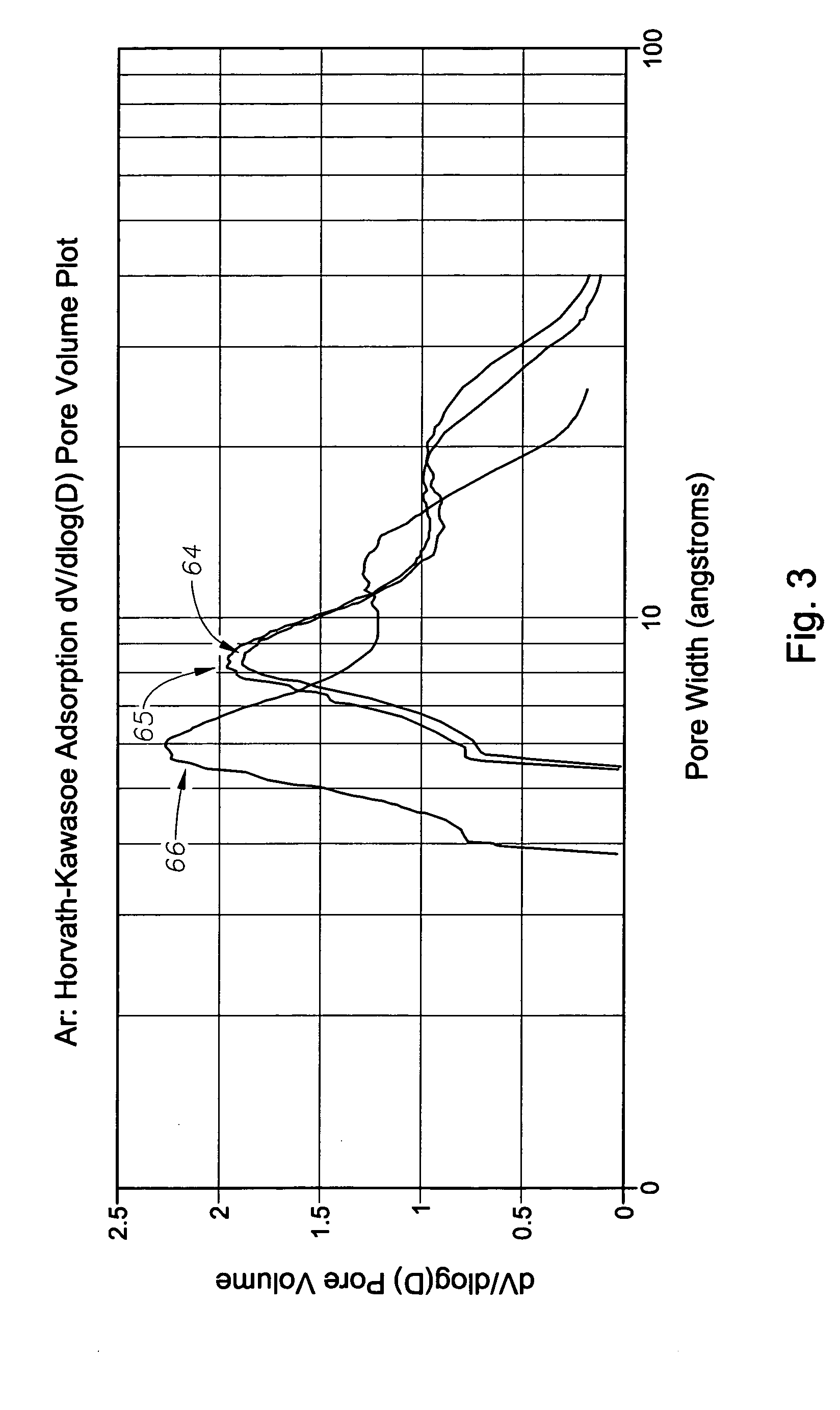Porous carbons from carbohydrates
a technology of porous carbons and carbohydrate, which is applied in the field of making porous carbons, can solve the problems of increasing surface area and creating mesoporosity, and achieve the effects of low surface area, high surface area carbons, and increased mesopores
- Summary
- Abstract
- Description
- Claims
- Application Information
AI Technical Summary
Benefits of technology
Problems solved by technology
Method used
Image
Examples
examples
[0063] It is believed that this disclosure and the examples recited herein are sufficient to fully describe the present invention and allow one skilled in the art to practice the invention. No limitations upon the scope of the invention are to be drawn from the examples included hereinbelow. It shall be understood that the scope of the invention is limited only by the claims.
examples 14
[0064] Porous carbons were prepared both with and without a cationic component at both low and high furnace gas flow rates. A mixture consisting of sucrose (10 g), water (7 mL), sulfuric acid (2.24 g) and, if used, ammonium sulfate (1.8 g), was heated at a temperature of 100° C. for 6 h under an atmosphere comprising an inert gas or air. The mixture was subsequently heated at 160° C. to provide a black solid. A final treatment at a temperature over 900° C. under a nitrogen atmosphere at a furnace gas flow rate of 16 oven vol / h or 0.6 oven vol / h provided the porous carbon. The BET surface area and BJH average pore diameter for the porous carbons obtained thereby are shown in Table 2.
TABLE 2Surface Area and Pore Diameter of Porous Carbons Made in theAbsence and Presence of Cationic Components andat Various Flow RatesAverageFlow RateCationicSurfacePoreExample(oven vol / h)ComponentArea (m2 / g)Diameter (nm)116None261.820.6None5212.4316(NH4)2SO43664.040.6(NH4)2SO49604.0
[0065] As can be se...
examples 4b-4c
[0066] The general method is equally applicable using strong carboxylic acids as the dehydrating agent. It was discovered that oxalic acid in the presence of a cationic component could be used in the present invention. The general method of Examples 1-4 employing carbonization at 1000° C. in nitrogen with no furnace gas flow was used. As shown in Table 3 porous carbons can be prepared with or without CTAB to provide porous carbons of differing surface areas.
TABLE 3Formulation and Properties of Porous Carbons Using Oxalic Acid.BET SurfaceExampleCTABOxalic AcidSucroseWaterArea (m2 / g)4B0.01.01076544C0.221.11071020
PUM
| Property | Measurement | Unit |
|---|---|---|
| temperature | aaaaa | aaaaa |
| temperature | aaaaa | aaaaa |
| temperature | aaaaa | aaaaa |
Abstract
Description
Claims
Application Information
 Login to View More
Login to View More - R&D
- Intellectual Property
- Life Sciences
- Materials
- Tech Scout
- Unparalleled Data Quality
- Higher Quality Content
- 60% Fewer Hallucinations
Browse by: Latest US Patents, China's latest patents, Technical Efficacy Thesaurus, Application Domain, Technology Topic, Popular Technical Reports.
© 2025 PatSnap. All rights reserved.Legal|Privacy policy|Modern Slavery Act Transparency Statement|Sitemap|About US| Contact US: help@patsnap.com


